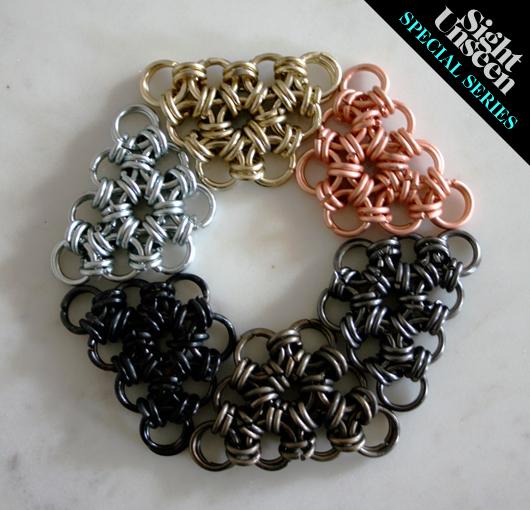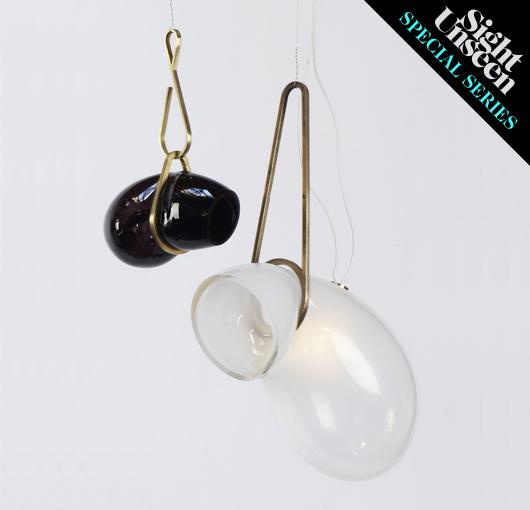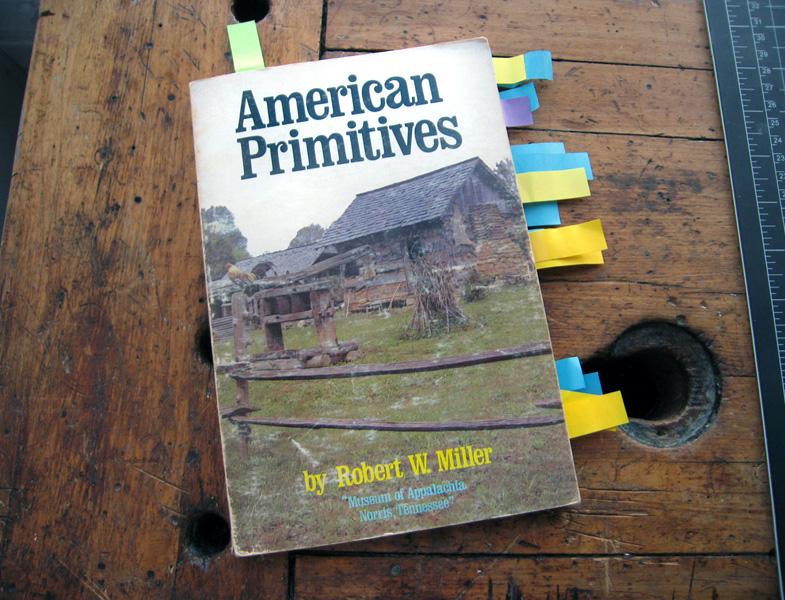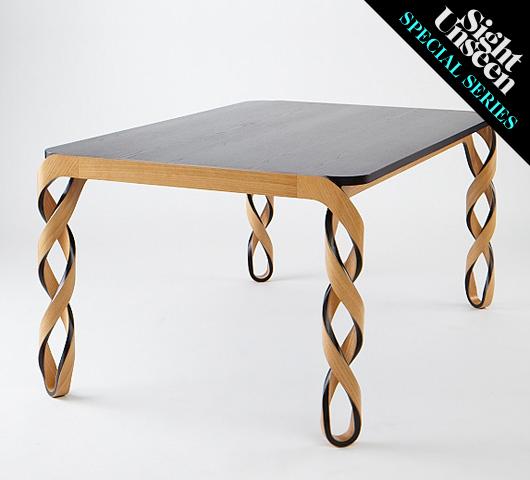
04.08.11
Q+A
Carwan Gallery Launch: Paul Loebach
In the Ventura Lambrate district at this year’s Milan Furniture Fair, half a dozen talented young designers and design brands from around the world are coming together to launch new work under the banner of the soon-to-open Carwan gallery in Beirut, with Sight Unseen as media sponsor. Through April 15, we’ll be showcasing each of the participants on the site by documenting how their new products were made, plus what their studios looked like during the development process. When we asked Brooklynite Paul Loebach which of the four products he’ll bring to the show had the most intriguing backstory, he immediately nominated his Watson table, a sandwich of carbon fiber and wood with double-helix legs that took him two and a half years to develop. Like the rest of Loebach’s oeuvre, the table reinterprets historical craftsmanship techniques using cutting-edge technologies, evoking yet another novel property from a material as old and as simple as wood. “I named the table after the guy who discovered DNA,” Loebach says. “I felt like a scientist doing this project, so I named it after one.”
Please tell us what you’ll be launching in Milan next week, and how it was made.
“The Watson table is made using a combination of bentwood and carbon fiber. It’s all about using carbon fiber in a way that highlights the structural integrity of the material, as opposed to the way we’re used to seeing it, as a sort of decorative veneer. It’s not even recognizable to most people here, where it serves as the structural spine of the table leg. The wood and carbon fiber have a symbiotic relationship, with the carbon allowing the wood to take on a really strong form in a way that it couldn’t on its own. It achieves a shape that I don’t think anyone’s ever seen in wood before, a form inspired by old-school turnings. I call them barley twists, where they’ll take a wood turning and carve a spiral into it until it totally opens up; you see it in architecture and staircase rails sometimes. It’s a really fancy, delicate way of doing turning, one that was popular in English furniture in the 1600s. I wanted to take that idea of an open twist and evolve it into something totally new.”
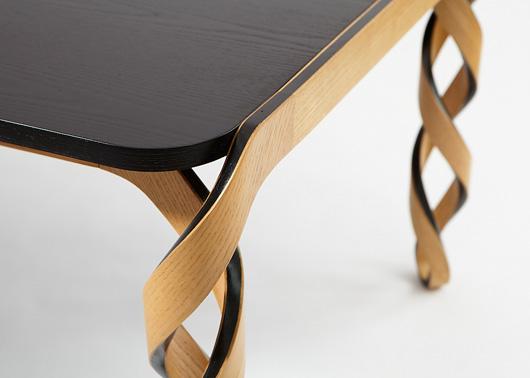
“One thing that’s interesting is that the carbon starts to look like wood — they’re remarkably similar in a lot of ways. When you cut into the side of it, it has a sort of grain and texture like wood does; it’s all fibers, which is really what wood is, too. But carbon is just incredibly strong and incredibly rigid. At first we were making the table just out of wood, and was so springy and bouncy. The legs had too much flex. Then once you add the carbon that totally goes away, and it really stiffens things up. I named the table after the guy who discovered DNA — I felt like a scientist doing this project, so I named it after one.”
Please show us an image of your studio at the moment and describe what’s going on in the photo.
“This is a photo of one of the table legs in progress. Originally I was playing around with lathe turning to make them, but that evolved more into an exploration of lamination, where it’s all bent and glued together. Each leg is wrapped around a five-piece mold. We kept calling it a couture table leg because you cut out this pattern in the wood or carbon fiber and drape it over the mold, then cut out the next pattern and drape it over, laying it down in layers and then pressing it all together in the end. I spent awhile looking to have someone else make it, but no one could do it or would do it. So I made the legs myself in my studio, and worked with a woodworker who did the heavy stuff — the joinery and the tabletop. For the carbon fiber I ended up collaborating with this shop in Massachussetts, with an engineer who advised me, but I did all the production myself.”
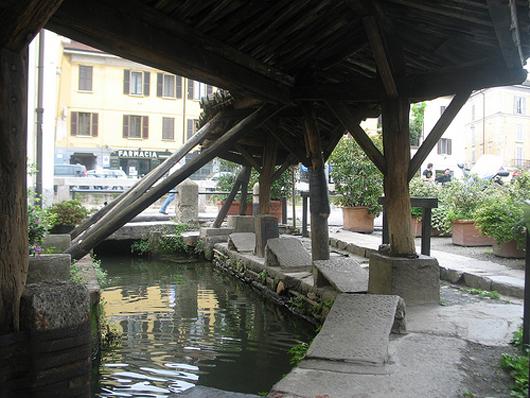
What was the best design you saw at last year’s Milan fair, and what are you looking forward to doing or seeing this year?
“Last year my friend took me to this old place on the canals where people used to clean their clothes in Medieval days, pre-Renaissance. The little clothes-washing station was still there (above). It was super amazing — it was like this little moment in the crazy Navigli area where all the sudden you go down this alley and you’re like holy shit, I’m standing where people stood in the 1300s. That’s the thing about Italy, you forget, and then there are these moments that remind you how old the culture is, and that it’s still carrying on. This year I’m looking forward to the food. It’s always the food, and the mozzarella. I’m also looking forward to going back to the Castiglioni studio. It’s so inspiring. He was really process oriented, and there’s process everywhere. It’s just vibrating with design — you can tell that so much thoughtful design went on in every inch of that space. You go there and you’re like, this is what design is supposed to be, this is it.”
